There are very few places in the world that I will go back to again and again, and the Maldives is one of them. It is truly a bucket list destination which lives up to all the hype! The Maldives is made up of 1,192 islands, located southwest of Sri Lanka in the Indian Ocean, of which only 188 are inhabited. It’s a pristine island nation with stunning beaches, turquoise blue water and welcoming locals. And it isn’t just for honeymooners – it’s the perfect destination for families, friends and couples too. There is something for everyone, whether you want to relax in the sunshine or explore the incredible underwater world. I’ve put together the ultimate Maldives travel guide with everything you need to know.
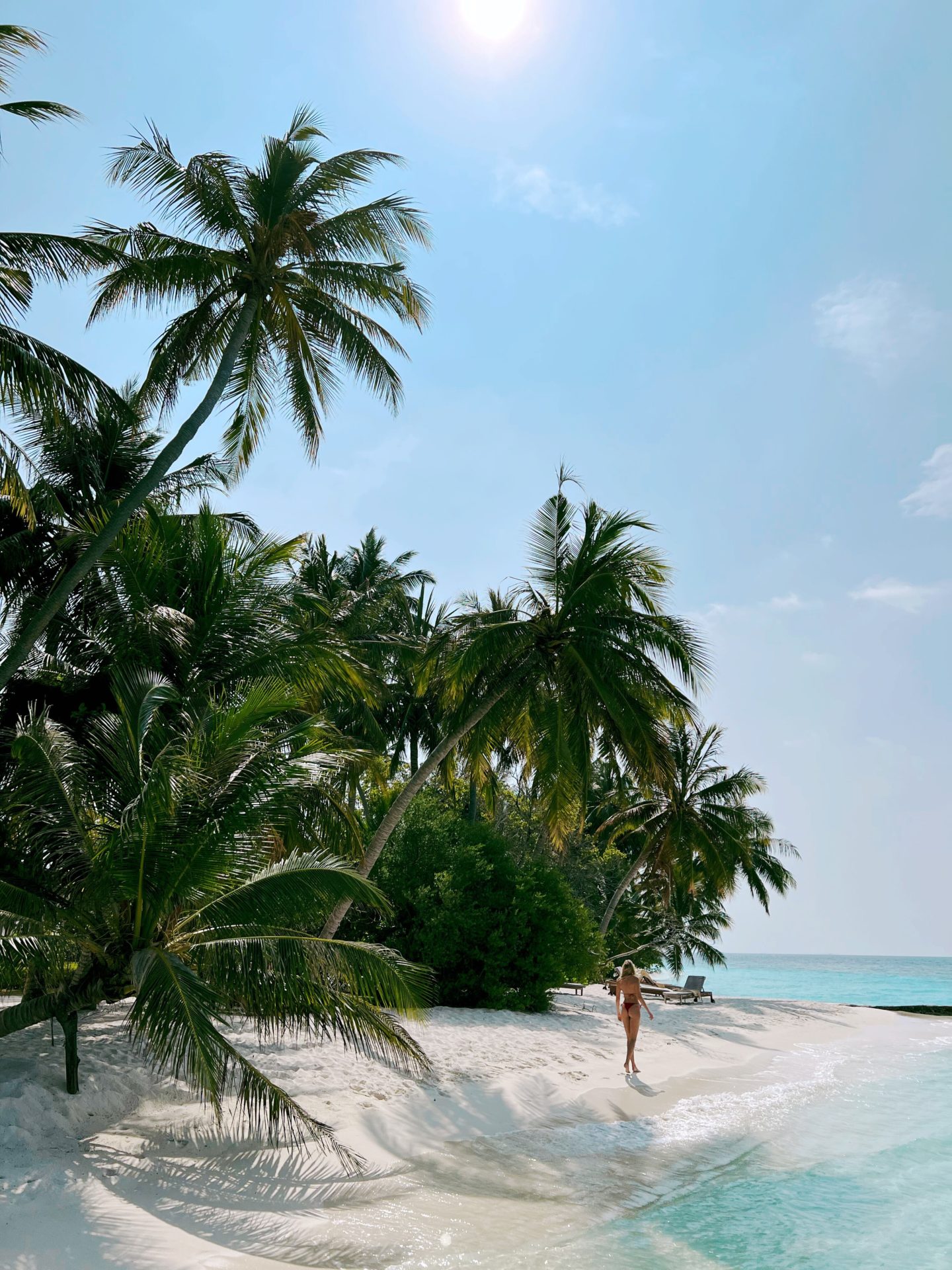
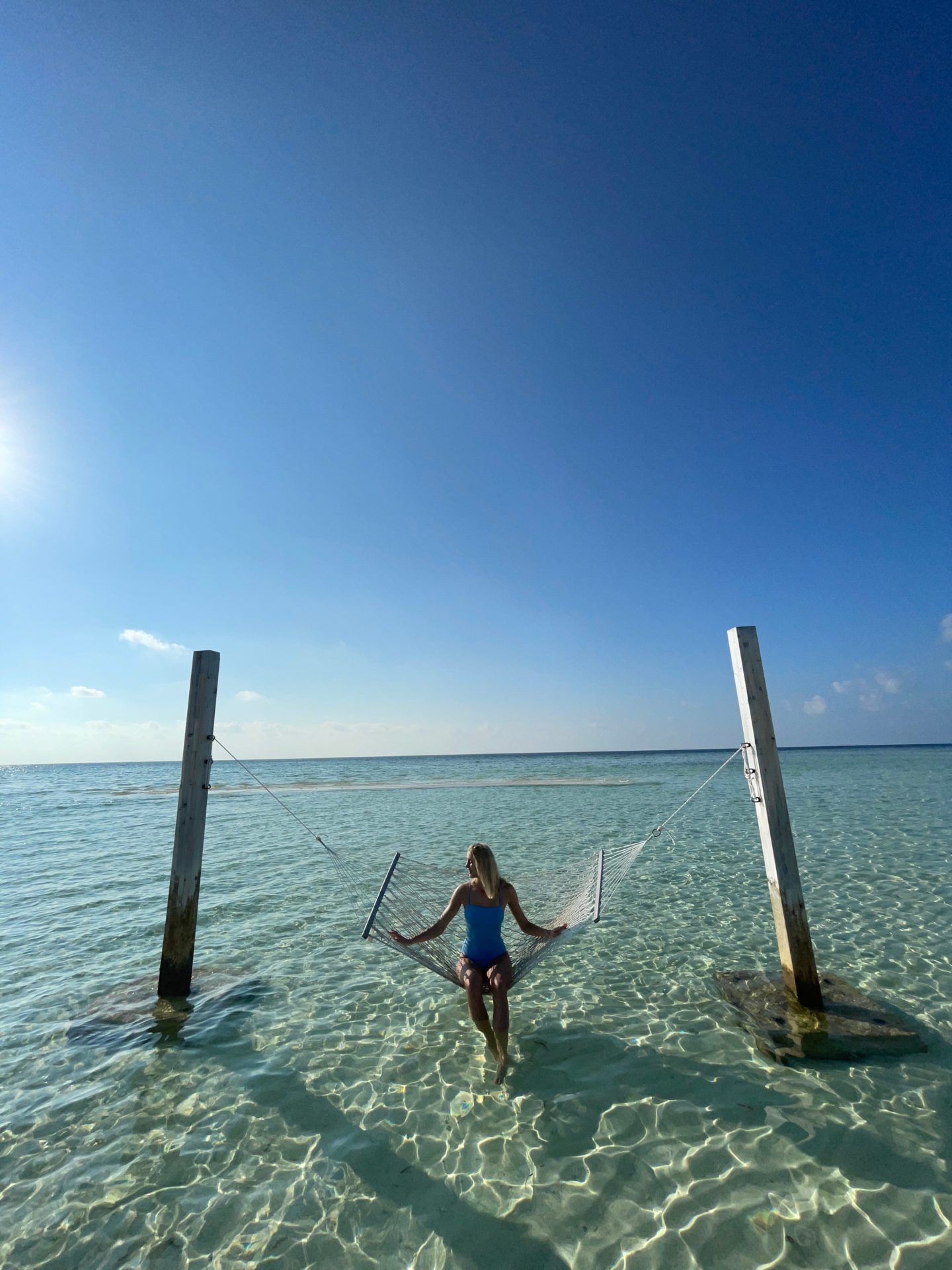
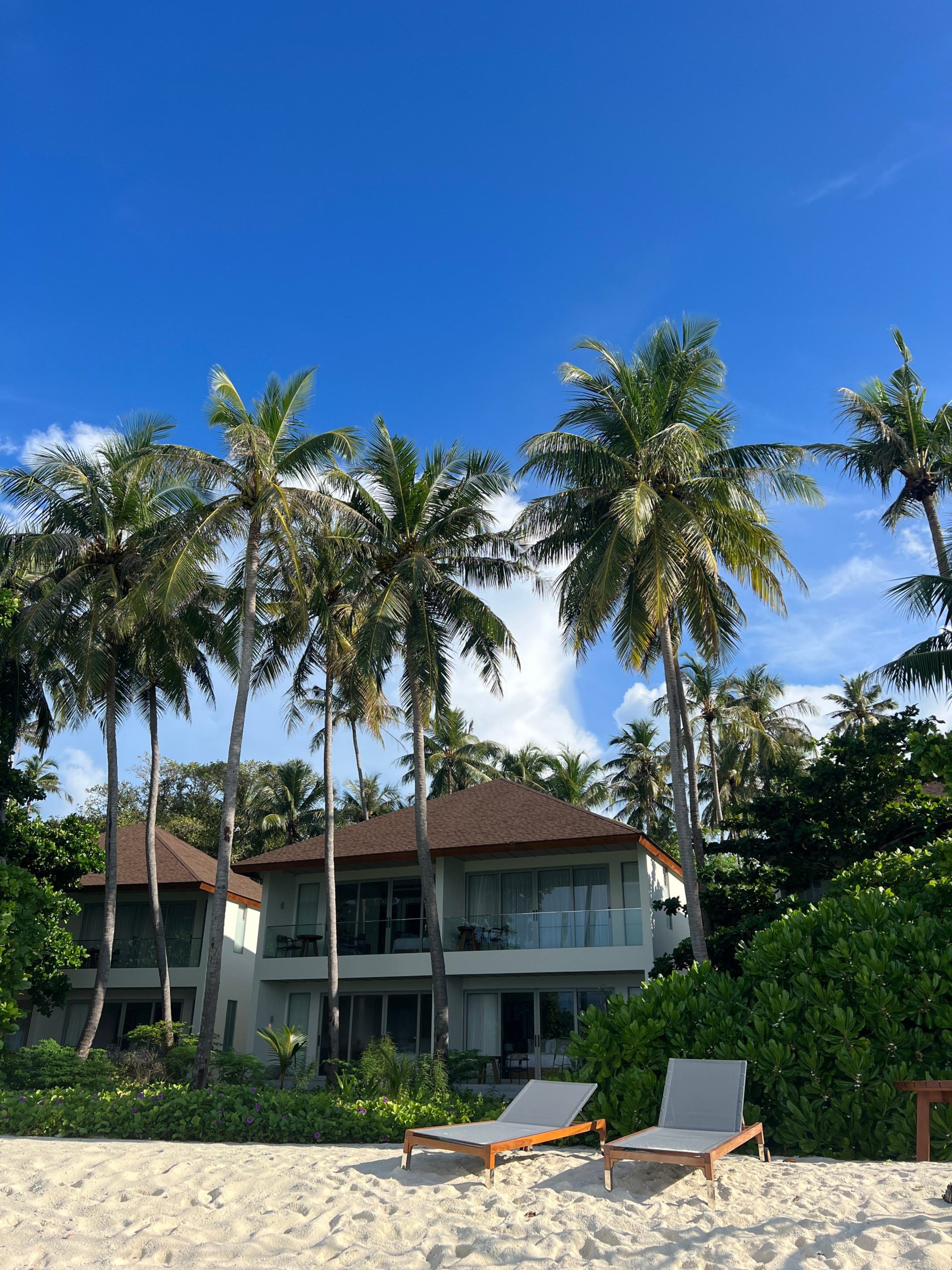
How To Experience The Maldives
There are three distinct ways to experience the Maldives, and they are all very different from one another.
1) Stay in an island resort. This is the most luxurious, expensive and popular way to experience the Maldives. If you’re looking for that typical Maldivian island experience, then this is the way to do it!
2) Stay on a liveaboard boat. If you’re a keen scuba diver, then this is by far the most cost-efficient way to experience the underwater world as you sail between the very best dive sites across the country.
3) Stay in a guest house on a local island. This is the best way to explore the Maldives on a budget and gives a more backpacking style experience. There are some great articles covering low-cost Maldivian travel such as this one.
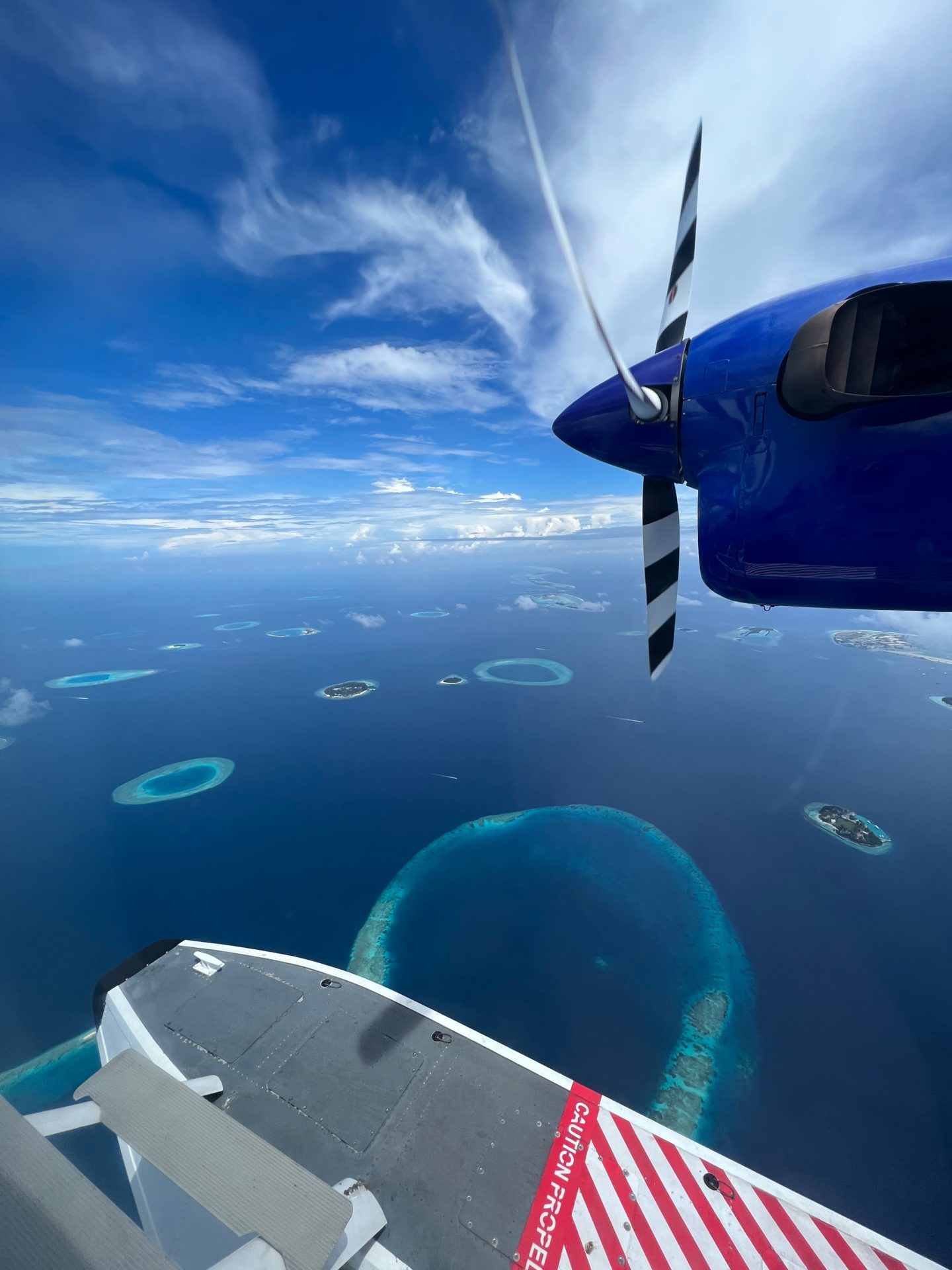
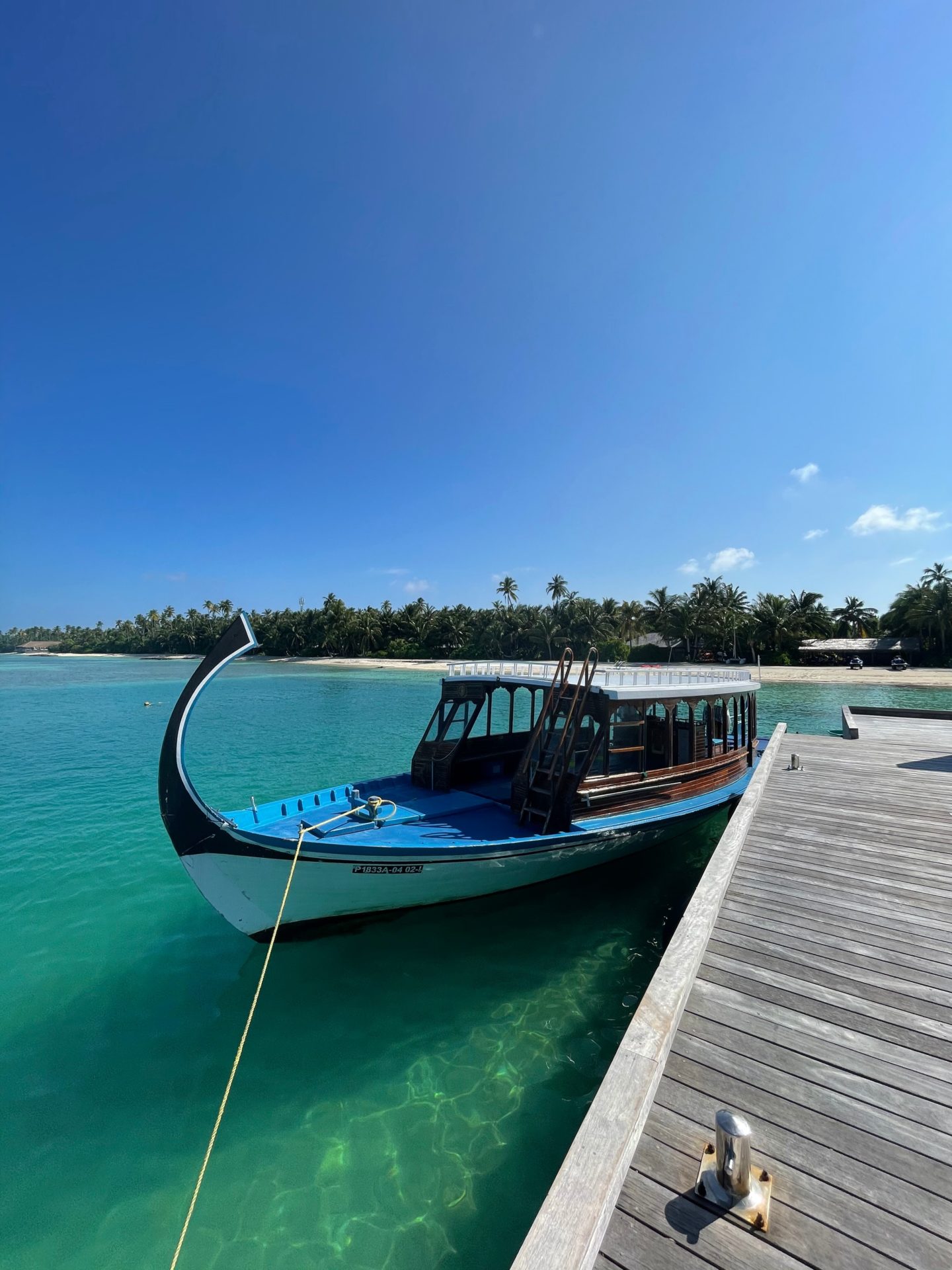
How Do You Travel Around The Maldives?
The islands in the Maldives are spread over 90,000 square kilometres, so travelling between them isn’t as quick or simple as you may think! When you land into the capital of Male, you will have to use one of these key transport options:
> A seaplane. The most iconic and scenic form of transport in the Maldives and the one I recommend you try to experience if you can. Seaplane transfers are typically around 30-60 minutes long. One thing to note is that luggage restrictions can be strict on seaplanes, so make sure you check them.
> A boat. If you’re staying on a resort relatively close to Male then you may be able to get a speedboat transfer, which is much cheaper than a seaplane.
> A domestic flight. If you’re staying in the far north or south of the Maldives, you may need to take a domestic flight to another local island and then catch a boat to your resort or hotel.
> A ferry. If you’re staying on a local island then you can catch a ferry.
The best thing to do is speak to whoever is handling your reservation out there, and they can give you guidance on which form of transport you need to take and assist you with booking it if necessary.
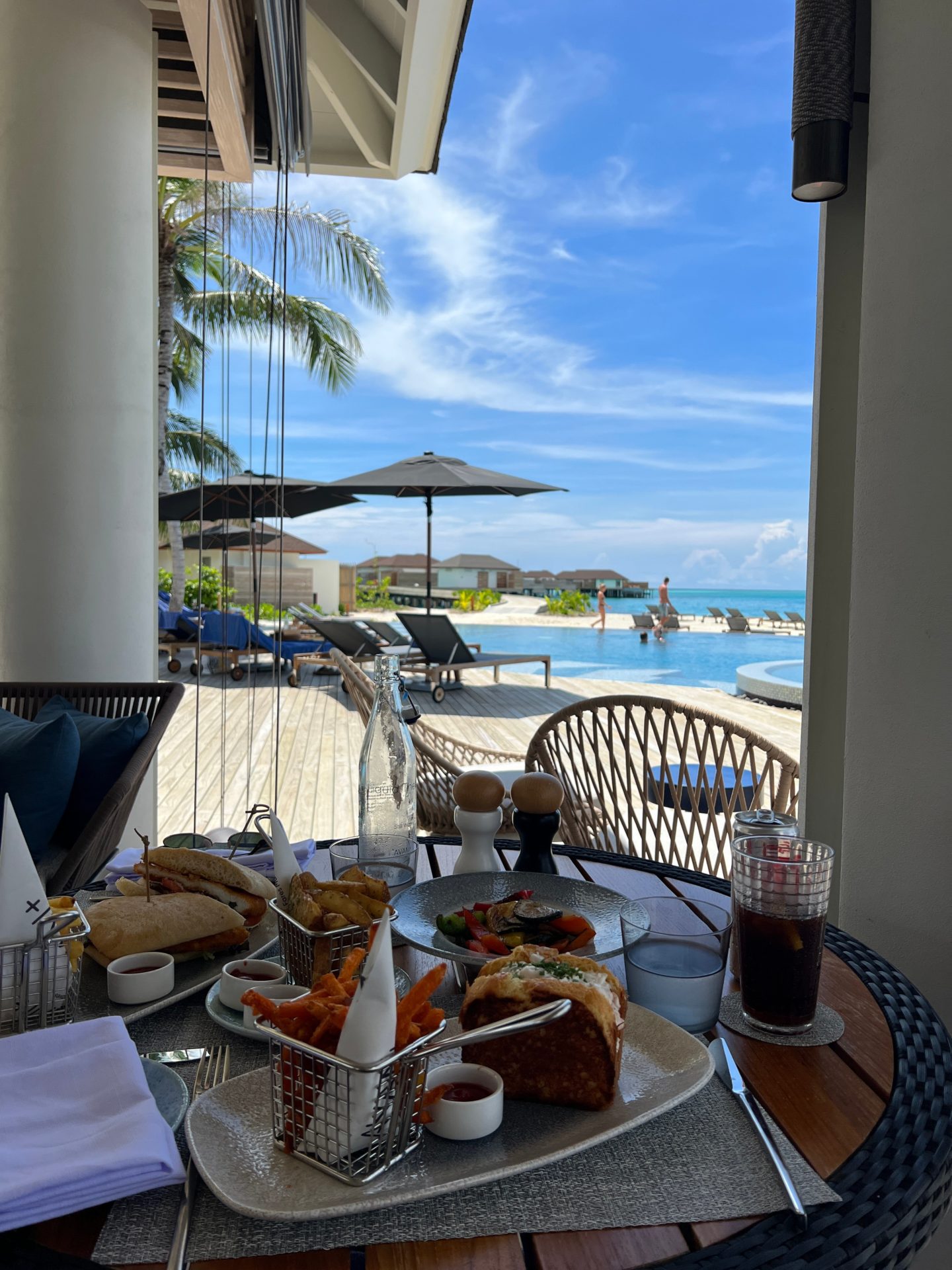
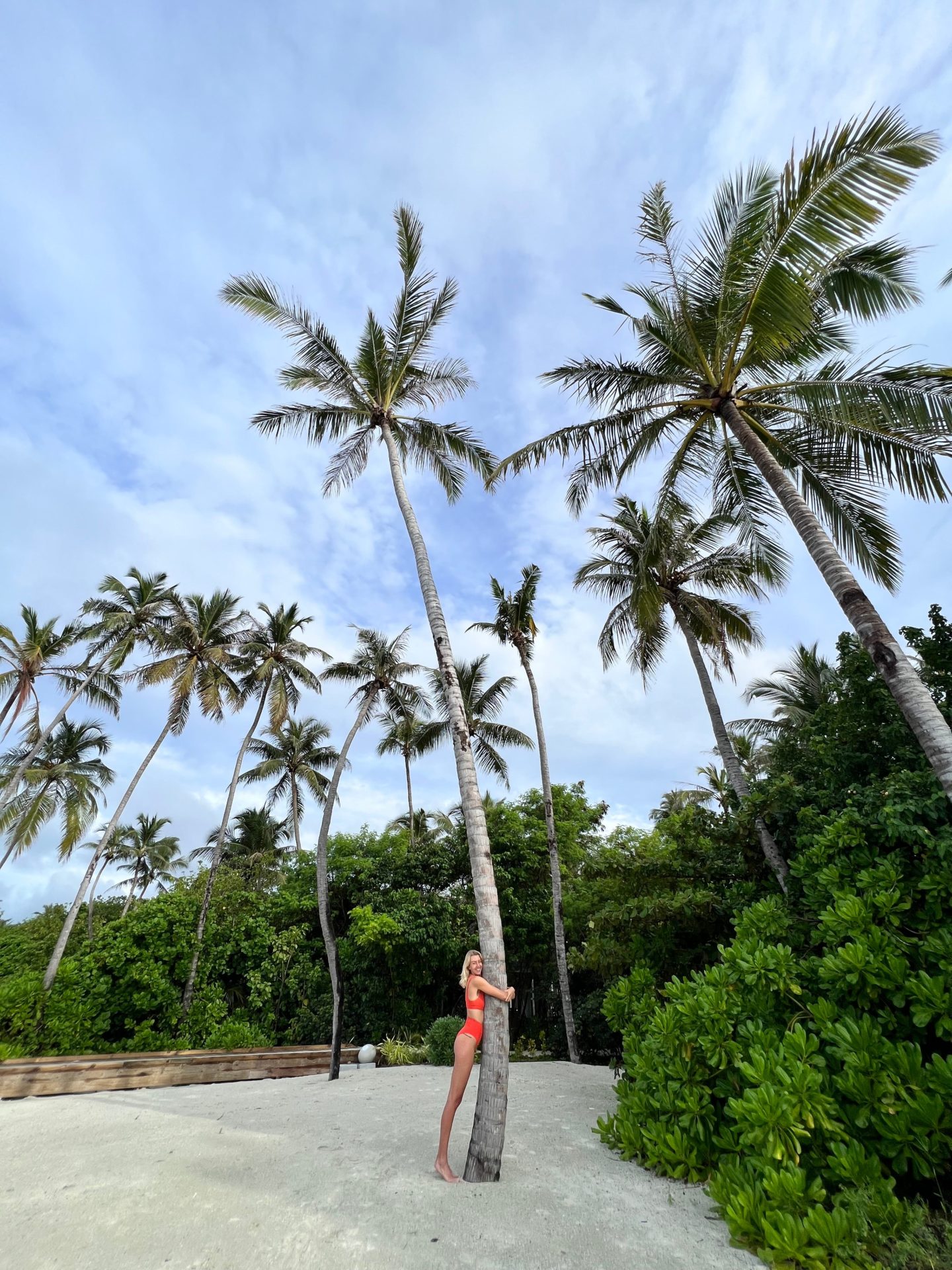
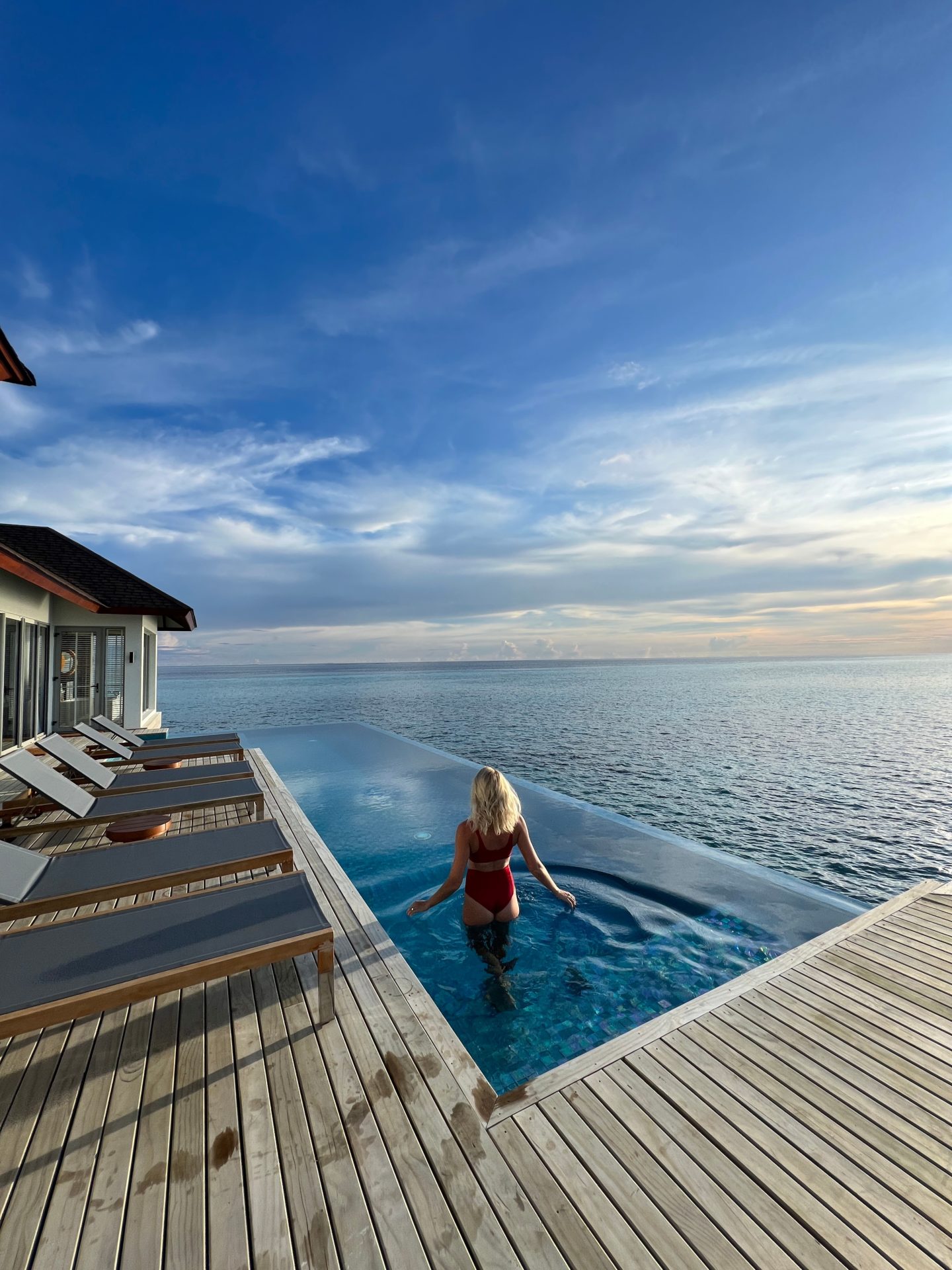
How To Choose A Maldivian Resort
At the time of writing, there are 168 island resorts operating in the Maldives, which is more than a little overwhelming! Each of these resorts is on their own private island (unless otherwise stated) and has its own unique selling points and features. Moving between island resorts can be quite expensive and challenging so it is easiest to be based in one place, which means picking the right one for you is even more important!
When considering which island to stay at, I would recommend asking yourself a few key questions
1) What is your budget? This price varies massively between resorts.
2) How far are you willing to travel from Male? Do you have the budget and time to catch a seaplane or domestic flight?
3) Who are you travelling with? Are there children who need to be entertained? Is it a romantic honeymoon or fun girls trip? Each resort has a different vibe.
4) Do you have a certain type of accommodation you want to stay in i.e. an overwater villa, or a beach villa with a pool?
5) What facilities do you want on the island? Such as water sports, a gym, a scuba diving centre, an underwater restaurant or a spa.
6) Do you care about marine life? If you plan on spending time in the water then consider looking for a resort with a good house reef for snorkelling or diving, or a prime location in an abundant atoll.
In terms of my own personal experience, I have been lucky to visit a range of Maldivian island resorts and each one is special in its own way.
> The Residence. One of the best house reefs I’ve seen and perfectly located for superior scuba diving.
> The St Regis. The epitome of luxury, a great choice for special occasions or honeymoons.
> The Westin. A tiny island with a focus on wellness, perfect for if you’re looking for that “castaway” experience.
> Niyama. A more laid back resort spread over two interconnected islands, complete with an underwater restaurant.
> Soneva Fushi. An iconic Maldivian resort. Unreal food, famous water slides into the ocean, impeccable service and a great focus on sustainability.
> Avani+. A brand new resort located in Baa atoll, with an amazing house reef, a great dive centre and a range of rooms which means they’re suitable for couples, families and friends.
Some other popular resorts include: Six Senses Laamu for sustainability focused luxury, Joali for incredible design and Lux* for more relaxed vibes.
Top tip: I recommend either booking half board and eating two larger meals a day if you want to save money, or going for full board/all inclusive. Buying food as you go off the menu can get ridiculous expensive due to the hotels having to import all the ingredients.
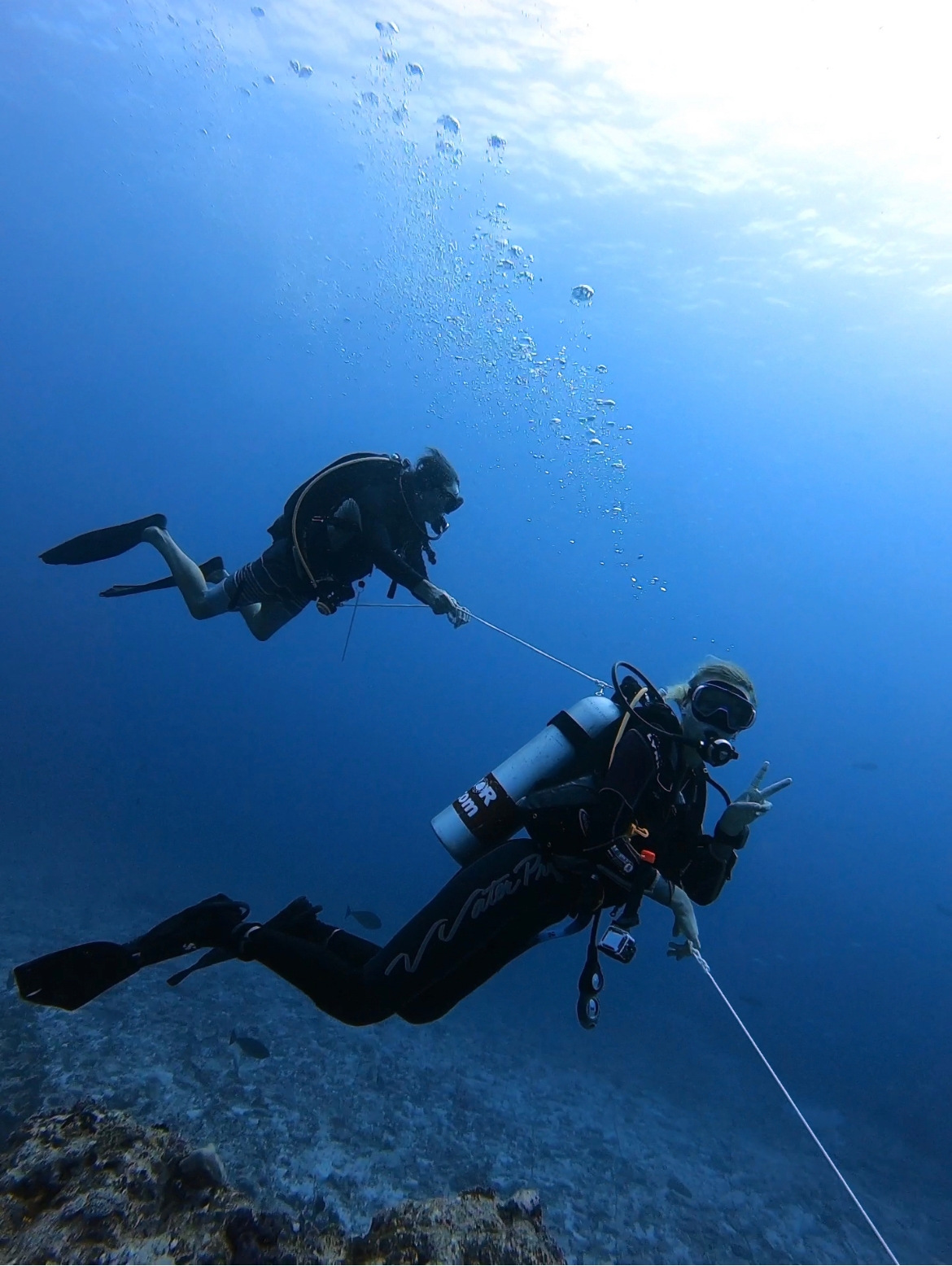
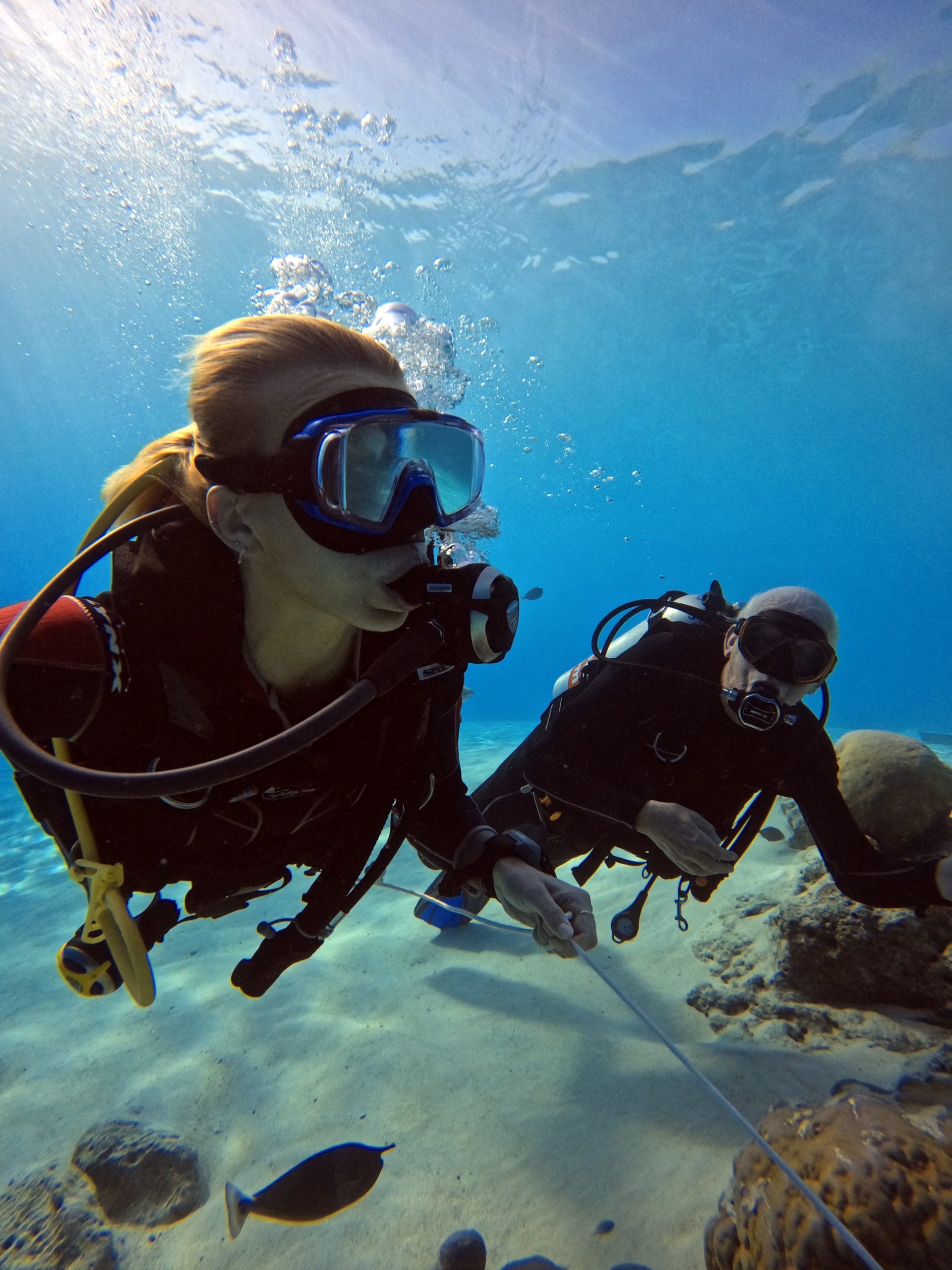
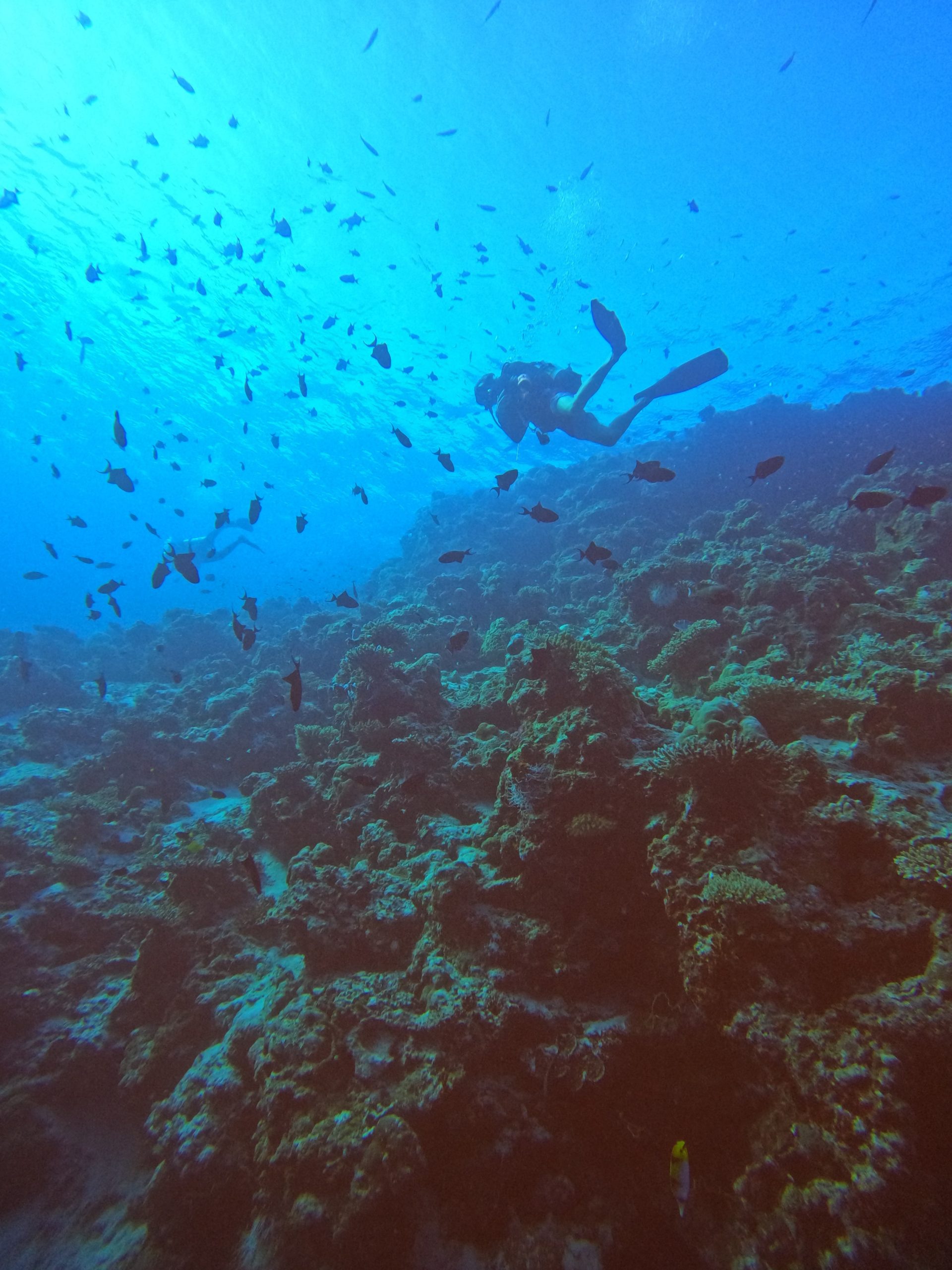
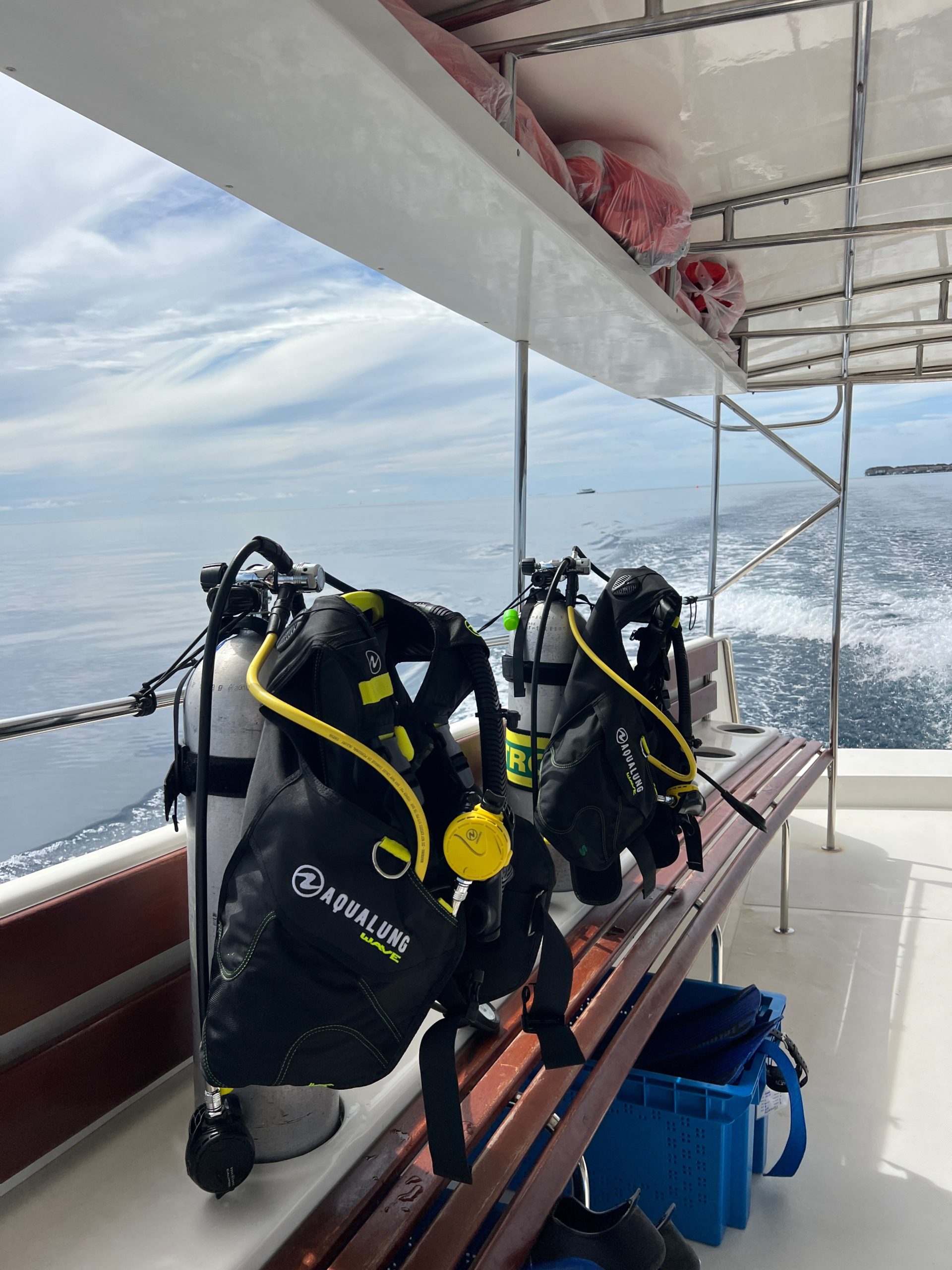
How To Choose A Maldivian Liveaboard
The liveaboard you choose to stay on will make a huge difference to your trip. And there are so many variables to consider. I could write a whole blog post just on this topic, but for now, here are some key things to look into:
- The boat itself. Have a look at the facilities of the boat, the cabins, the interiors and the dive deck. It’s also worth reading reviews.
- The route the boat is taking. There are different routes which give different experiences. Boats which go to the north will allow you to escape the crowds. Boats exploring the central atolls are typically more beginner friendly. These routes will give you a taste of the well known Maldivian marine life. Boats going to the far south are for more advanced divers, typically focusing on shark diving, channel diving and navigating strong currents.
- The difficulty of the diving. Certain liveaboard routes will only allow guests with 150+ dives, while on others you only need 20. Make sure you pick a route suitable for your experience level.
- Availability. Liveaboards can get booked up 2+ years in advance on popular routes and boats. So, be sure to look way ahead when planning a dive trip.
I have personally had great experiences on every Emperor and Master liveaboard boat I have dived on, but I recommend browsing all the boats and comparing them on liveaboard.com.
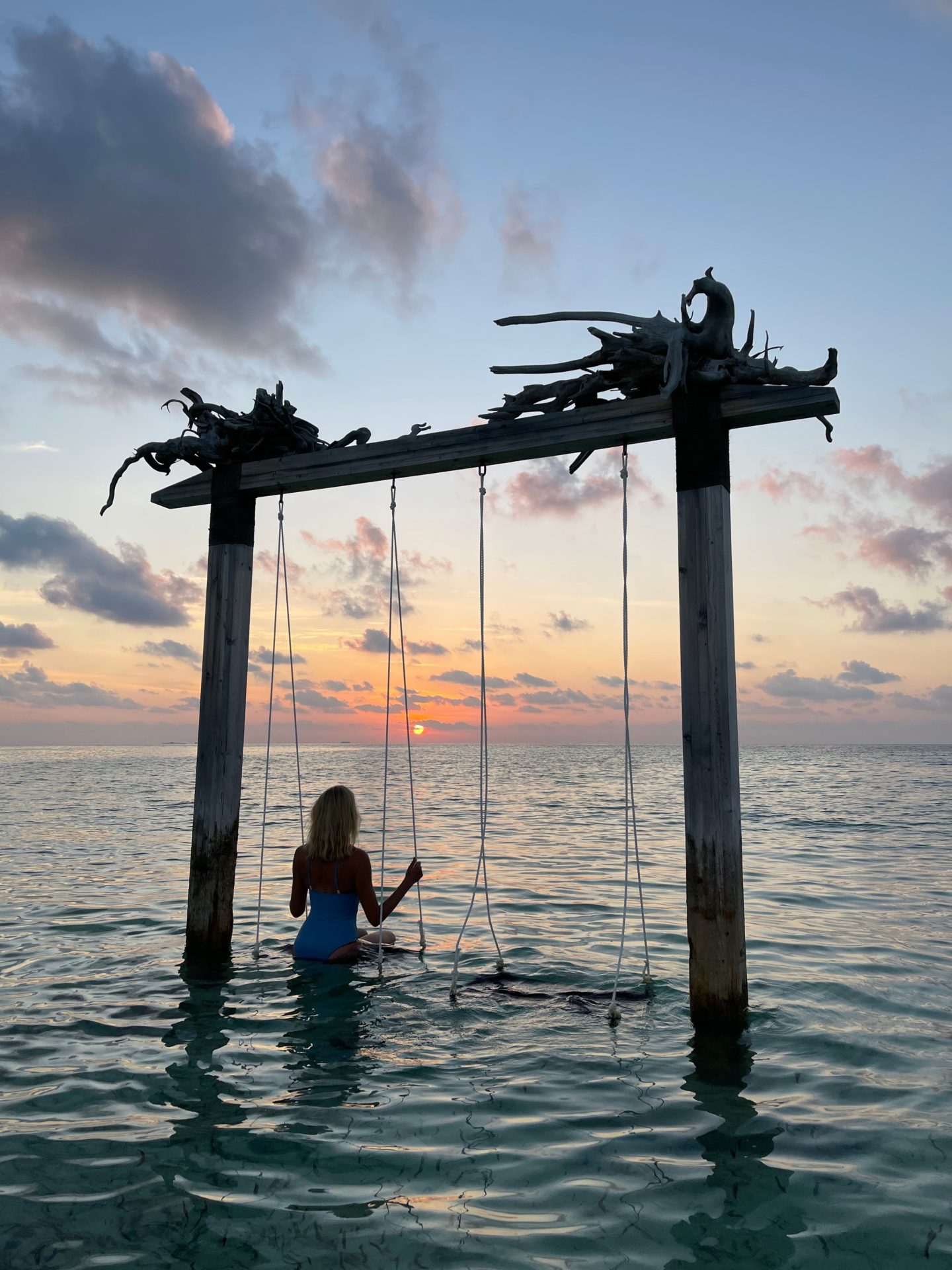
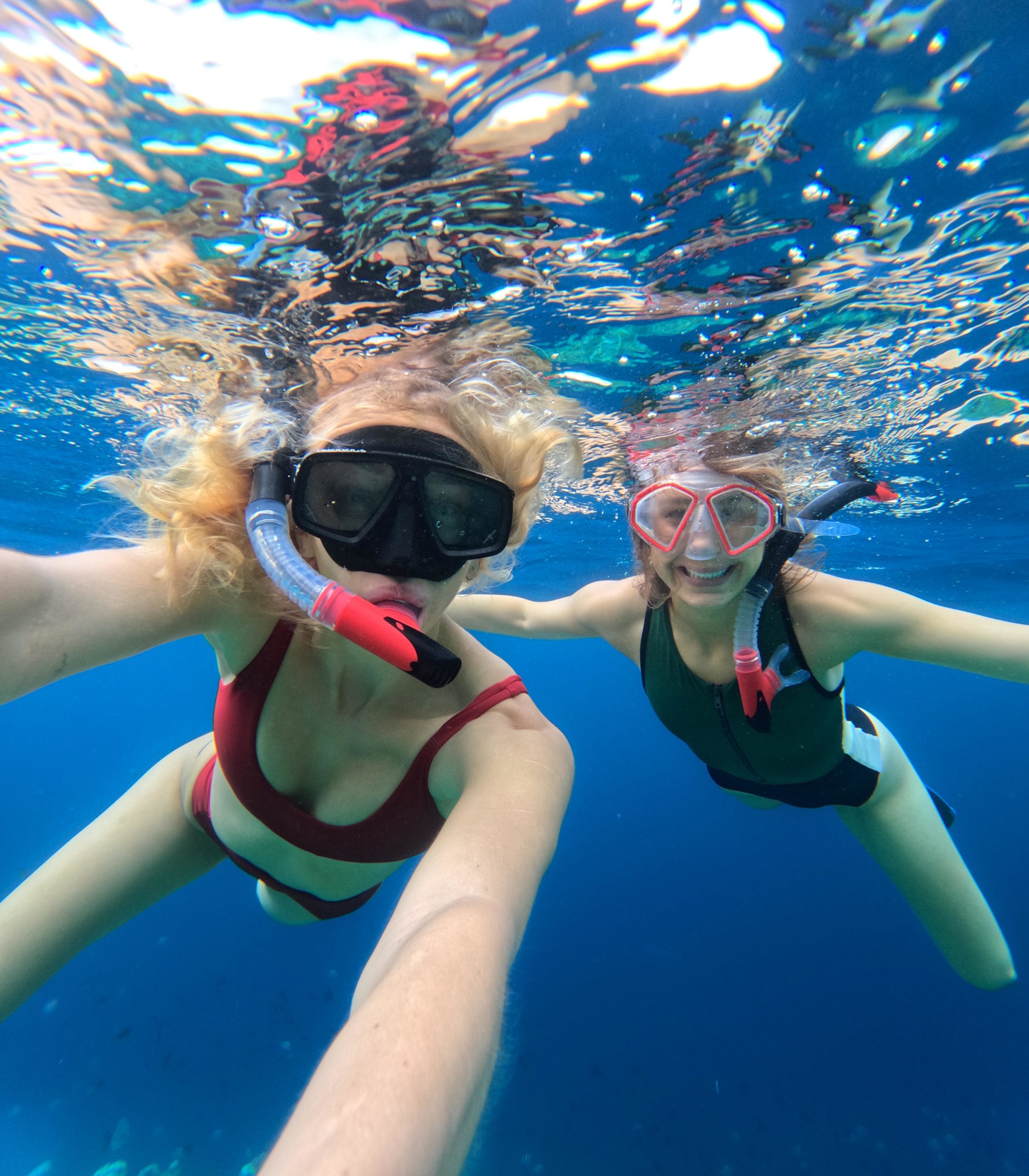
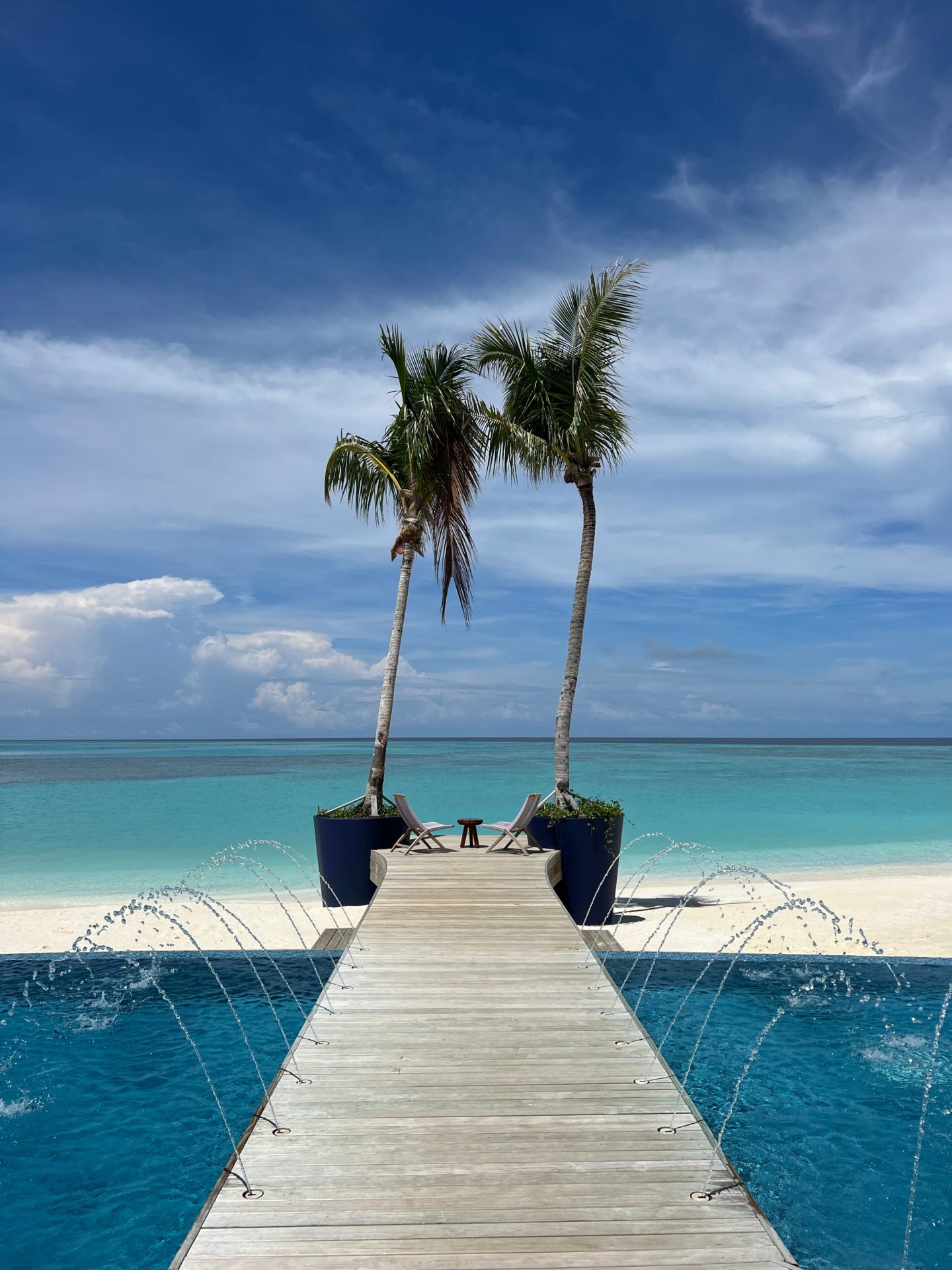
What Activities Are There To Do?
A common misconception about the Maldives is that there is nothing to do. I am someone who gets itchy feet and needs an activity a day at least when I am on holiday, and the Maldives more than caters for that! Give these a go:
- Snorkelling & scuba diving.
- Boat trips, like a sunset dolphin cruise, visiting a local island, an uninhabited island or a sand bank.
- Take a cooking class.
- Go to the spa, the gym or try a yoga class. Some hotels even have tennis courts!
- Try watersports like paddle-boarding, kayaking or riding jet skis.
And of course, you can relax on the beach with a good book!
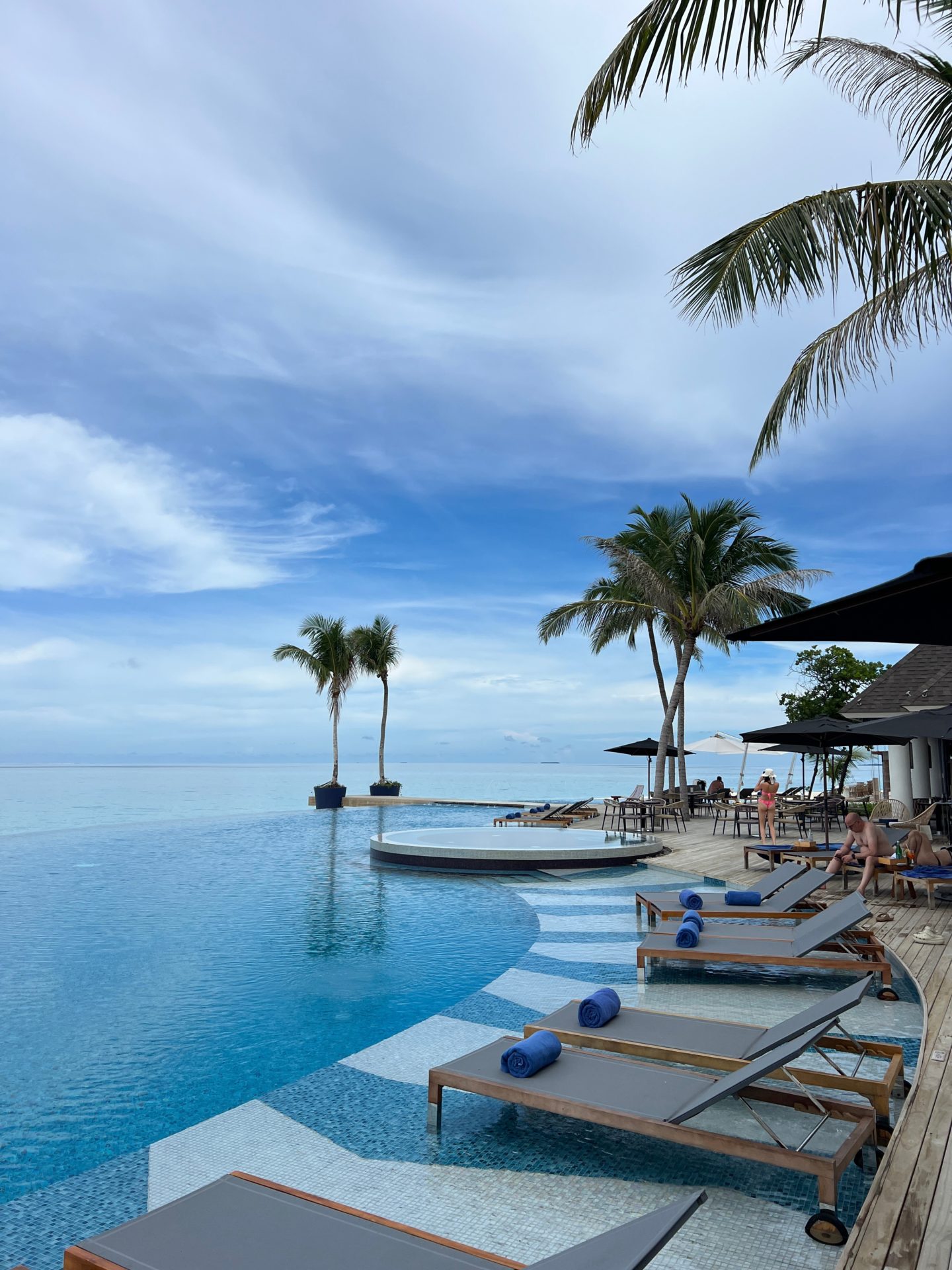
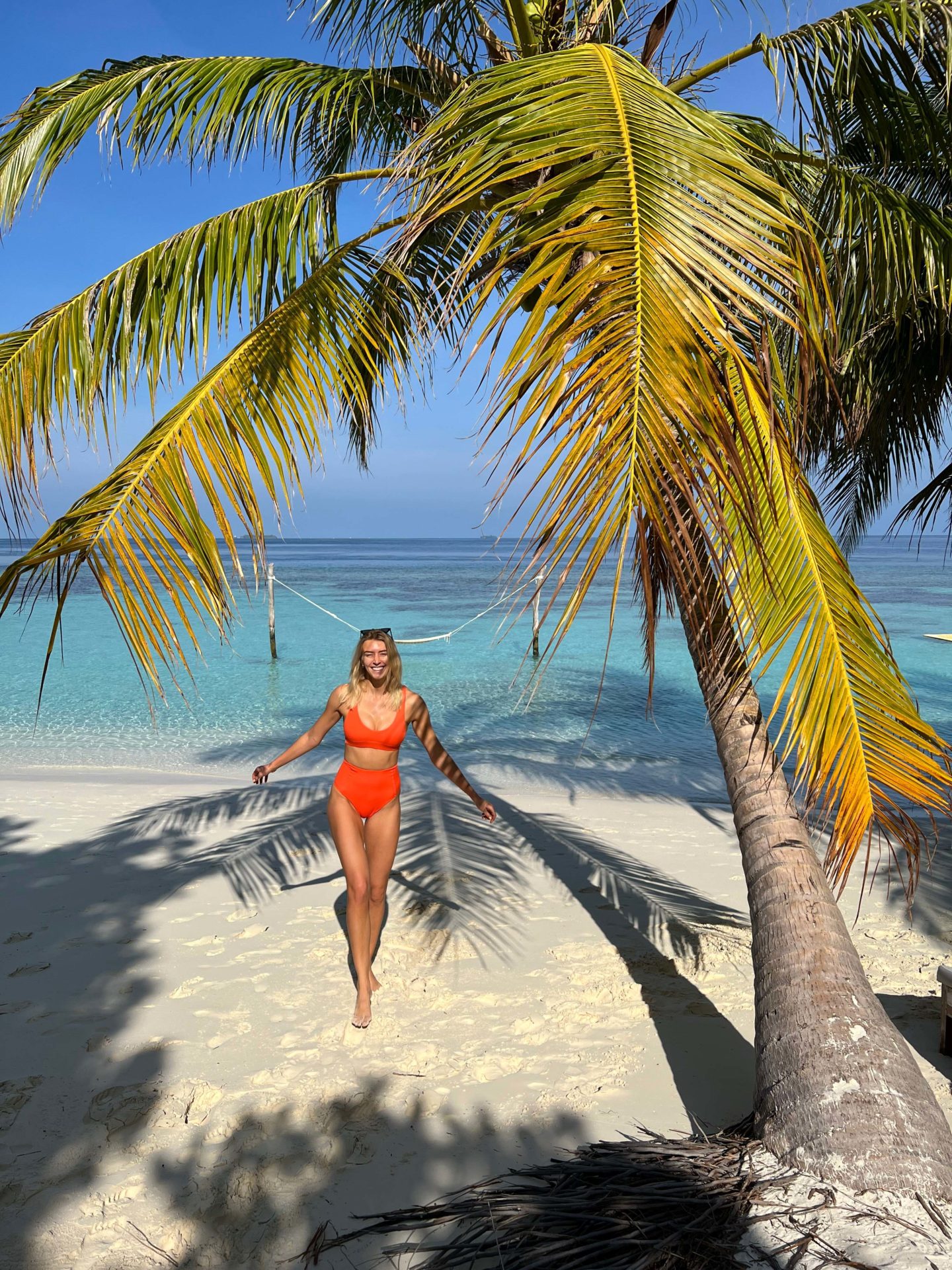
Things You Need To Know About The Maldives
Before you plan a trip to the Maldives, there are a few things you should know:
- The Maldives is a conservative muslim country, so when you are in public places like the airport or a local island, then please be respectful and cover up. You can wear whatever you please on resort islands.
- In general, the best season to go for stable weather and good underwater visibility is between mid December to mid March. However, that means higher prices.
- There can be mosquitos on the islands. Typically there aren’t too many but they are still there! So make sure you take your repellent.
- Resorts and boats can cater for pretty much any dietary requirements, but try to let them know in advance so they prepare for your arrival.
- A common question I get is how long to stay in the Maldives. Personally I would recommend an absolute minimum of a week for a boat or resort stay. But, 10 days is the ideal amount of time!
- Even in the dry season, you can get heavy tropical rain showers. So, don’t expect clear blue skies all day every day.
- Take cash with you for tips, as there are no ATMs on the resort islands – USD is fine.
- Bring lightweight and casual clothing, most resorts are pretty laid back. I typically won’t wear shoes the entire time I am in the Maldives, except maybe trainers if I go to the gym or sandals if I am dressing up one night.
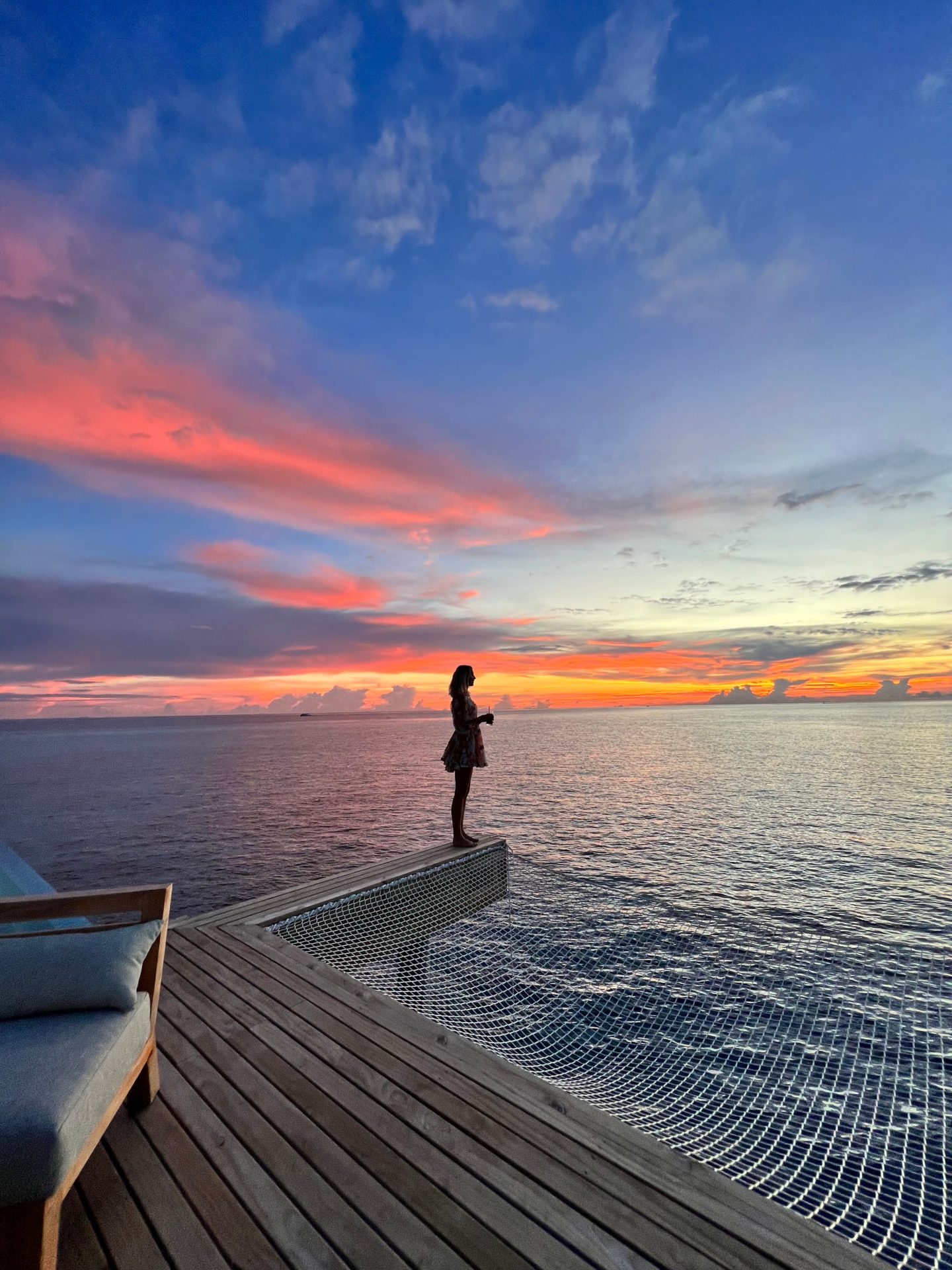
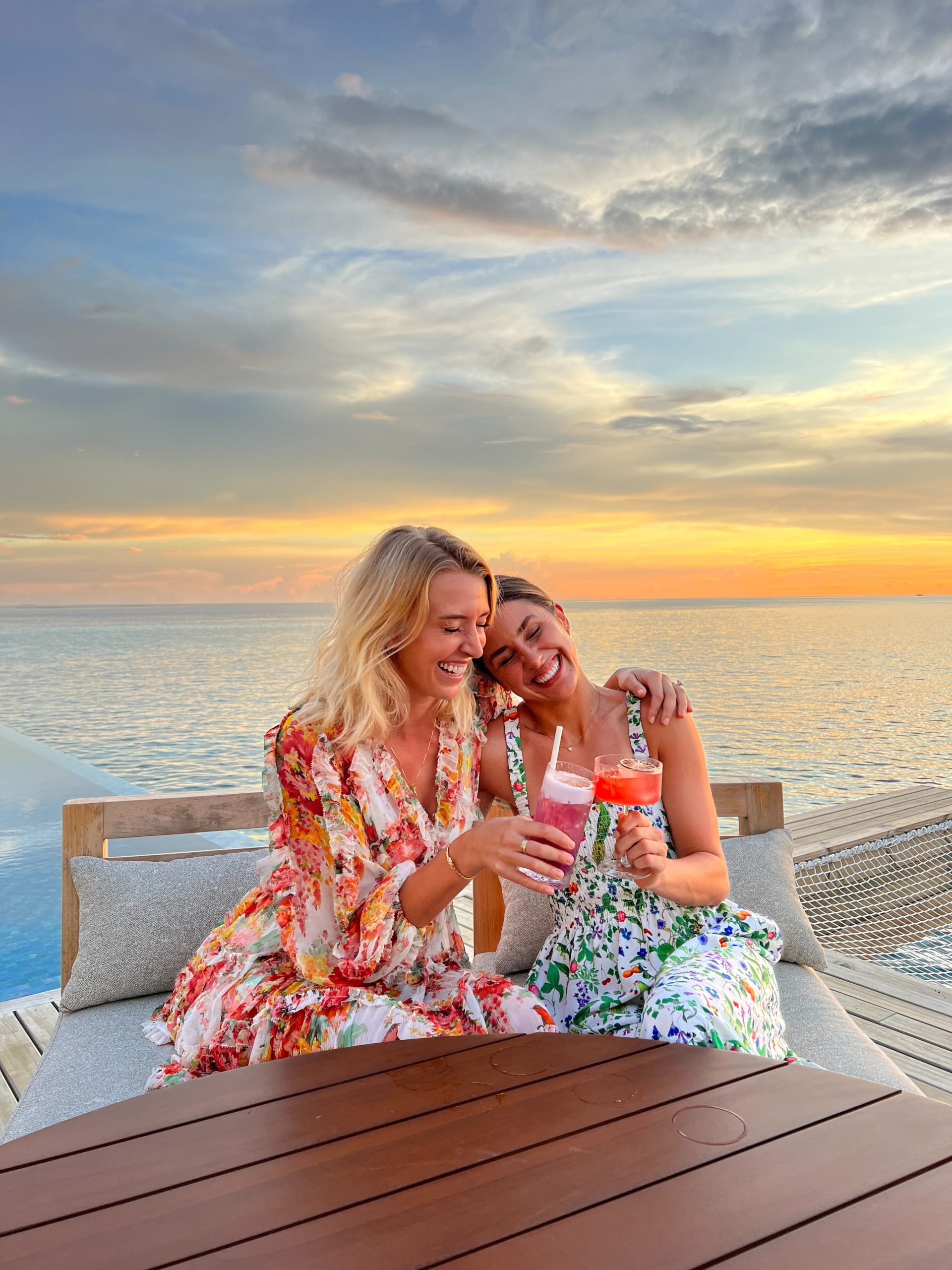
How Much Does A Trip To The Maldives Cost?
Well, that varies massively! It totally depends on whether you stay at a resort, on a local island or on a boat – but here are some rough estimations.
International Flights: £600-800 in economy.
Internal Transfers: Between £200-600 round trip on a seaplane depending on the journey time. Domestic flights can be around £150 one way or £300 return. Boat transfers can be around £120-150.
Resort Hotel: This hugely depends on the resort you choose and the kind of room you want to book. As an example, at a five star luxury resort a beach villa can be £300-700 a night and an overwater villa can be £1500-2000 a night. At a four star resort a beach villa can be £200-300 a night and an overwater villa can be £700 a night.
Liveaboard: Prices range massively, from £1500 for a week in the central atolls through to £3500 for two weeks in the deep southern atolls.
Local Island: If you stay in a guesthouse on a local island, you can be paying anything from £40-80 a night.
Then you need to add on any extra activities you may want to do if you’re staying on an island, so it certainly isn’t cheap!
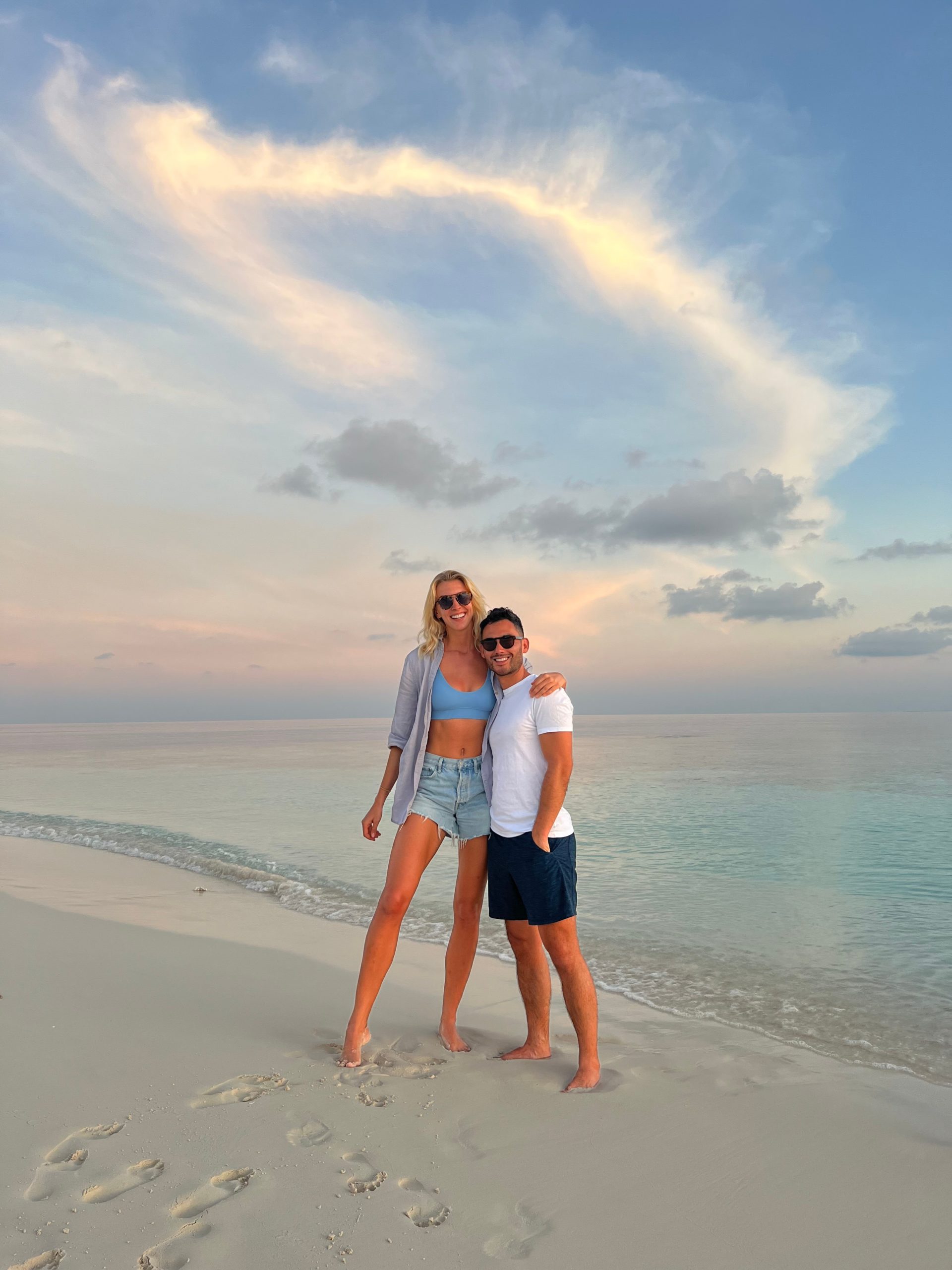
If you want to learn more about scuba diving, then check out my beginner’s guide to diving here.
Safe travels,
Zanna x

